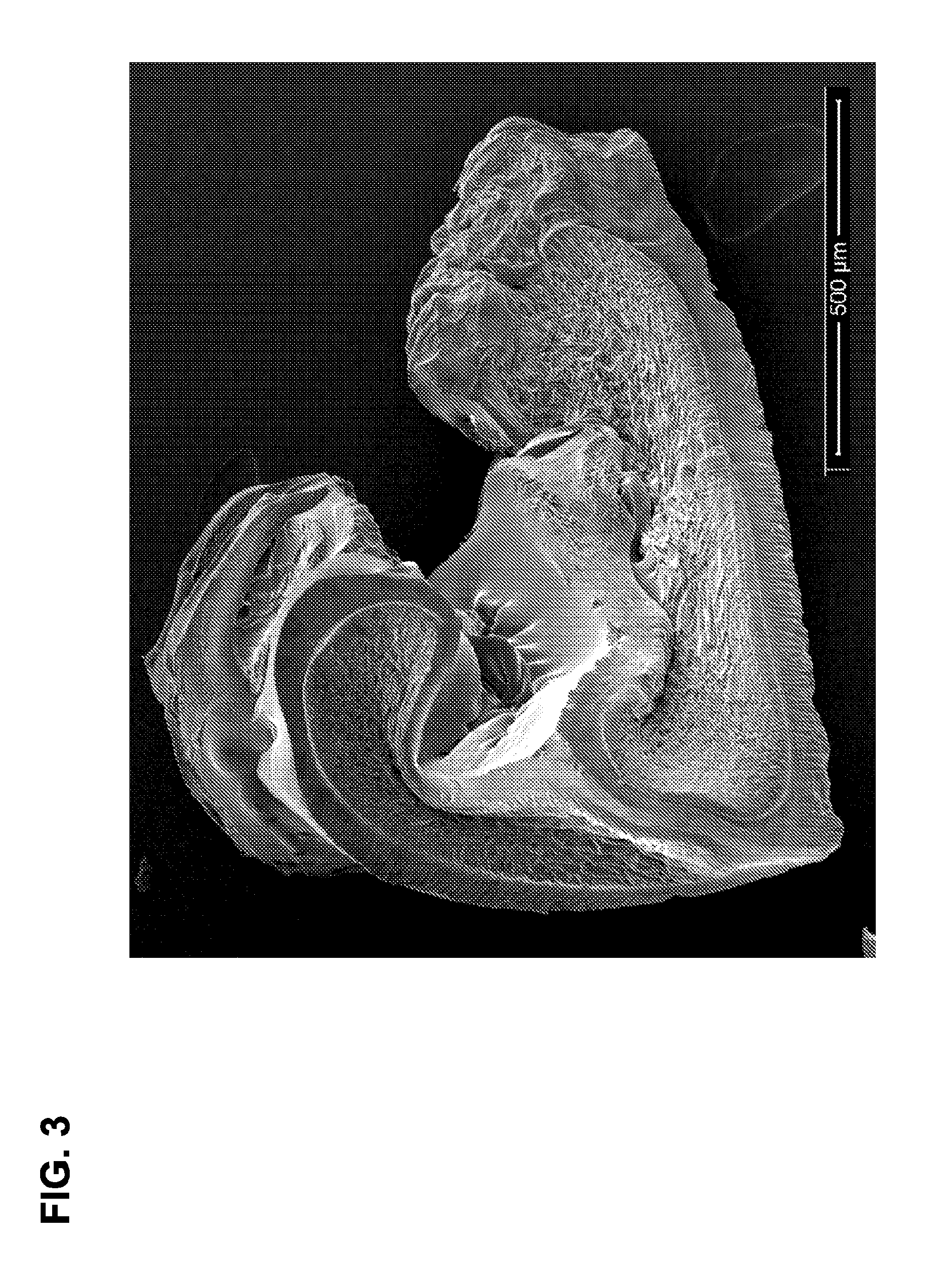Degradable superabsorbent polymers
a superabsorbent polymer and superabsorbent technology, applied in the field of degradable superabsorbent polymers, can solve the problems of high retention rate of absorbed aqueous liquid under load, and achieve the effects of high demand, high processing efficiency, and high absorption capacity and absorption rate of aqueous liquid
- Summary
- Abstract
- Description
- Claims
- Application Information
AI Technical Summary
Benefits of technology
Problems solved by technology
Method used
Image
Examples
example 1
[0122]To a 1 L roundbottom flask was added 250 ml of 5% wt aqueous solution of PVOH (99% hydrolyzed, Mw 188,000) and 28 ml of 50 wt % aqueous solution of glyoxylic acid. The flask contents were mixed thoroughly using a mechanical stirrer. Then 4 grams of sodium hydroxide dissolved in 100 ml of water was added to the flask with mechanical stirring. The resulting mixture was mounted on a rotary evaporator and the flask partly submersed in an oil bath set to 60° C.; pressure was reduced to 15-25 Torr and the flask was rotated in the oil bath. Water was observed to collect in the catch flask of the rotary evaporator. After evaporation of water had subsided, the flask contained a semi-transparent, rubbery material. The material recovered from the bottom of the flask weighed 25.2 g. The polymer had a glass transition of 0° C., capacity of 37 g DI H2O / g, and an initial rate of water absorption of approximately 0.06 g of DI H2O / g per second (0.06 g / g·sec). When the material was heated to 10...
example 2
[0123]A reaction was carried out according to Example 1, except that no sodium hydroxide was added. The resulting polymer had a water absorption capacity of 6 g DI H2O / g.
example 3
[0124]Approximately 0.5 g of the material obtained in Example 1 was dispersed in 20 mL of deionized water in a vial. The vial was capped and allowed to sit at ambient temperature on a laboratory benchtop. After about 1 week, two patches of a white / gray, moldy appearing material were observed to be suspended in or on the hydrogel. A photograph of the vial was taken and this photograph is shown in FIG. 6A; the arrows indicate the moldy appearing material. The vial was allowed to remain on the benchtop for an additional 4 weeks, during which time the moldy material was observed to grow into large patches. A second picture of the vial was taken and this photograph is shown in FIG. 6B; the arrows indicate the moldy appearing material. The vial was allowed to remain on the benchtop for an additional 3 weeks, during which time the moldy material was observed to grow; at the end of the 3 weeks the gel had disappeared completely and the gray material had fallen to the bottom of the vial. The...
PUM
| Property | Measurement | Unit |
|---|---|---|
| heights | aaaaa | aaaaa |
| heights | aaaaa | aaaaa |
| particle size | aaaaa | aaaaa |
Abstract
Description
Claims
Application Information
 Login to View More
Login to View More - R&D
- Intellectual Property
- Life Sciences
- Materials
- Tech Scout
- Unparalleled Data Quality
- Higher Quality Content
- 60% Fewer Hallucinations
Browse by: Latest US Patents, China's latest patents, Technical Efficacy Thesaurus, Application Domain, Technology Topic, Popular Technical Reports.
© 2025 PatSnap. All rights reserved.Legal|Privacy policy|Modern Slavery Act Transparency Statement|Sitemap|About US| Contact US: help@patsnap.com



